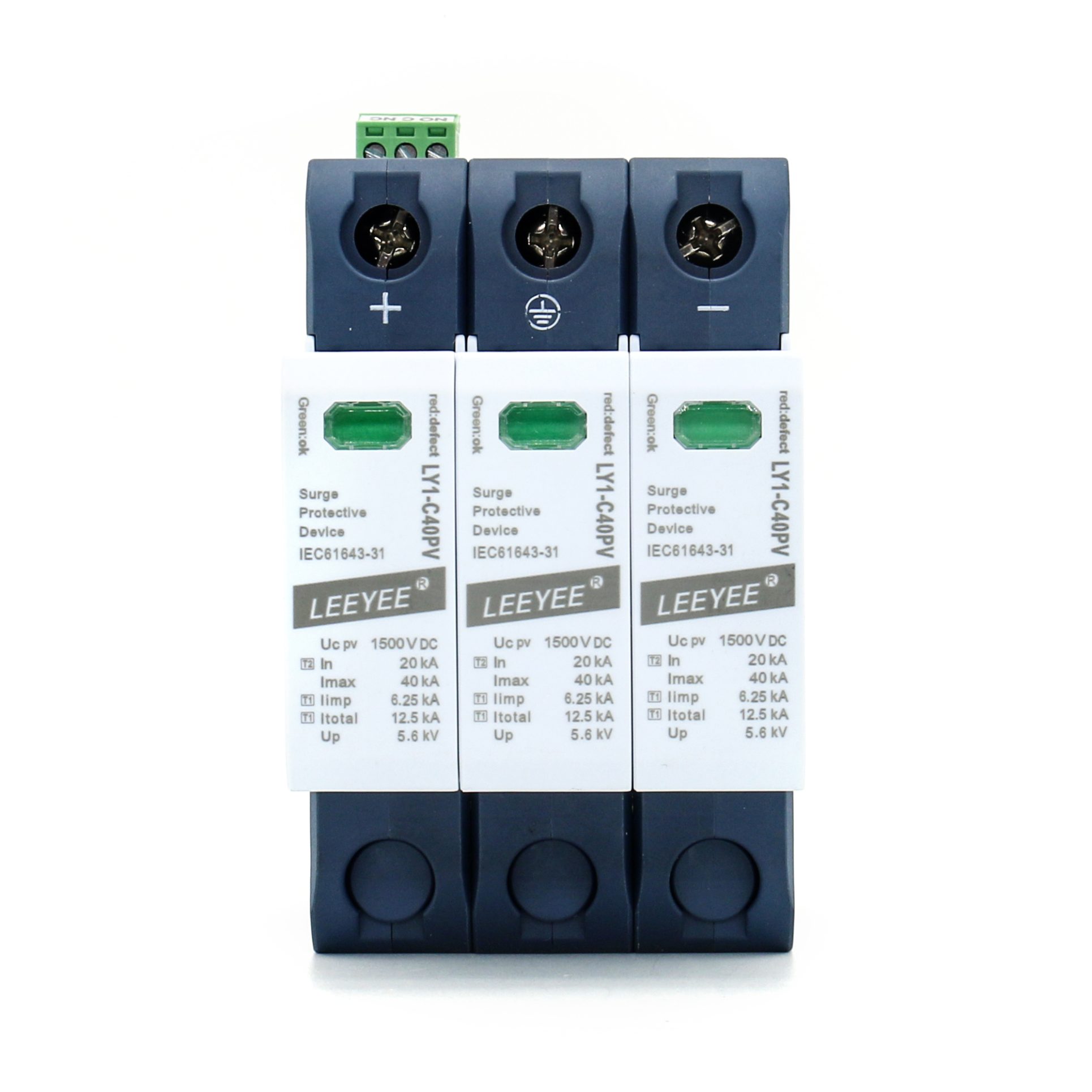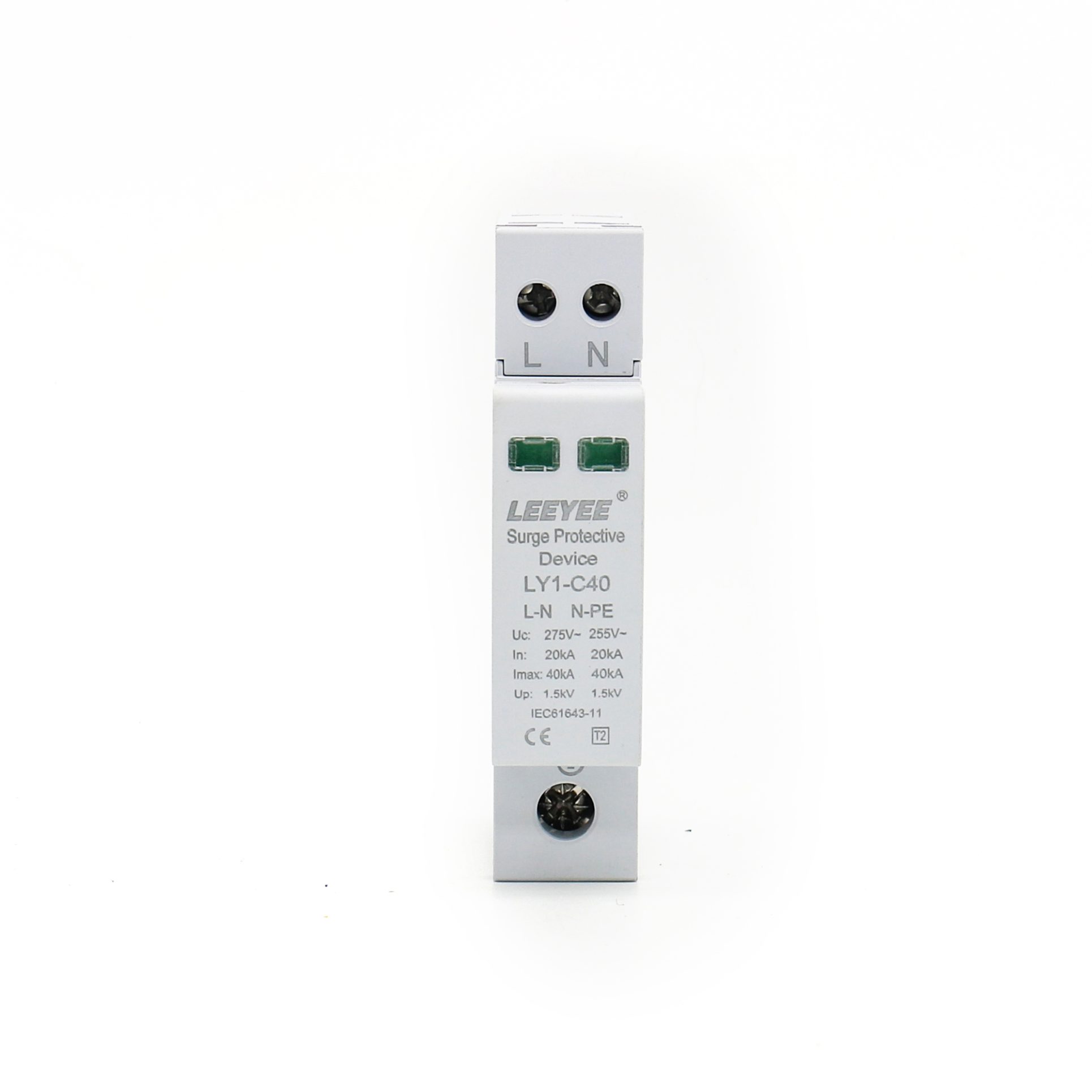Table of Contents
I. Understanding Surge Protective Devices (SPD)
1.1 Definition and Working Principle
Surge Protective Devices (SPDs) protect electronic equipment from voltage surges. These surges result from lightning, system switching, or faults. Though brief, they carry high energy. SPDs provide a low-impedance path that safely directs surge current to ground. IEC standards ensure SPDs limit surges to safe levels—typically under 2.5 kV. High-quality SPDs react within nanoseconds. Choose SPDs based on system needs and technical specifications. This matching ensures protection when it matters most.
1.2 Main SPD Types & Applications
SPDs fall into three types:
-
Voltage-Switching SPDs fit high-voltage transmission lines. They act fast to stop heavy surges.
-
Voltage-Limiting SPDs suit low-voltage systems. They curb peak voltages in homes and offices.
-
Combined SPDs blend both features. Use them in places like hospitals and data centers. They ensure fast reaction and protection.
Per IEC, you must assess system sensitivity and choose the right SPD. A hospital case study showed voltage-limiting SPDs cut surge-related failures by over 70%.
II. Determining Protection Needs
2.1 Assessing System Sensitivity
System sensitivity depends on device tolerance to voltage spikes. For example, servers and controls are very sensitive. Motors and lighting tolerate more. IEEE standards categorize this sensitivity. A data center before installing SPDs suffered millions in losses. You must assess sensitivity to pick the right SPD.
2.2 Defining Protection Levels and Standards
You select protection levels based on IEC 61643. Residential buildings need lower levels. Critical systems need higher protection. A chemical plant that followed IEC 61643‑11 saw a 70% drop in equipment failure. Also, check UL 1449 and EN 61643 certifications. They confirm local regulatory compliance.
III. Choosing the Right SPD
3.1 Matching SPD to System Needs
Start by examining your electrical setup. For sensitive equipment—like hospital imaging or data center servers—use SPDs with low voltage protection levels (VPL). IEC 61643‑11 recommends VPL remain below the system’s tolerance window.
For high-energy environments like chemical plants, select SPDs with proper Nominal (In) and Maximum Discharge Currents (Imax). Ensure Imax meets the maximum expected surge current.
Outdoor SPDs need rugged design—weather-proof, corrosion-resistant, and heat resistant. That covers offshore platforms or harsh climates.
3.2 Comparing SPD Types
-
Type 1 (Voltage-Switching): Handles direct lightning. Installed at the service entrance. In ranges from 10 kA to 120 kA per IEC 61643‑11.
-
Type 2 (Voltage-Limiting): Designed for internal surge protection. In is typically 5–40 kA.
-
Hybrid/Combined: Offers full-range protection. Though pricier, it saves on downtime and maintenance.
Balance cost and performance to secure long-term safety.
IV. Key Technical Parameters
4.1 Continuous Operating Voltage (Uc)
Uc indicates the highest voltage SPD can sustain without activating. For 230 VAC systems, pick Uc at least 10–20% above nominal voltage. Industry data shows under-rated SPDs trip more often, increasing maintenance. Choose wisely to balance cost and reliability.
4.2 In and Imax Values
-
Nominal Discharge Current (In): Sustained current that the SPD handles repeatedly.
-
Maximum Discharge Current (Imax): The highest surge current the SPD can tolerate in one event.
For example:
-
In = 20 kA handles typical surges.
-
Imax = 40 kA can withstand extreme cases.
Choosing the right values prevents equipment failures and avoids unnecessary replacements. Franklin’s adage holds: “An ounce of prevention is worth a pound of cure.”
✅ Final Summary (I–IV)
This guide section covers:
-
SPD basics: purpose and how they work.
-
SPD types and where to use them.
-
Assessing system sensitivity and required protection levels.
-
Key specs: Uc, In, Imax, and application selection.
The next section will address installation, maintenance, regulations, economics, and case studies.
Click to view SPD Guide Part Two


